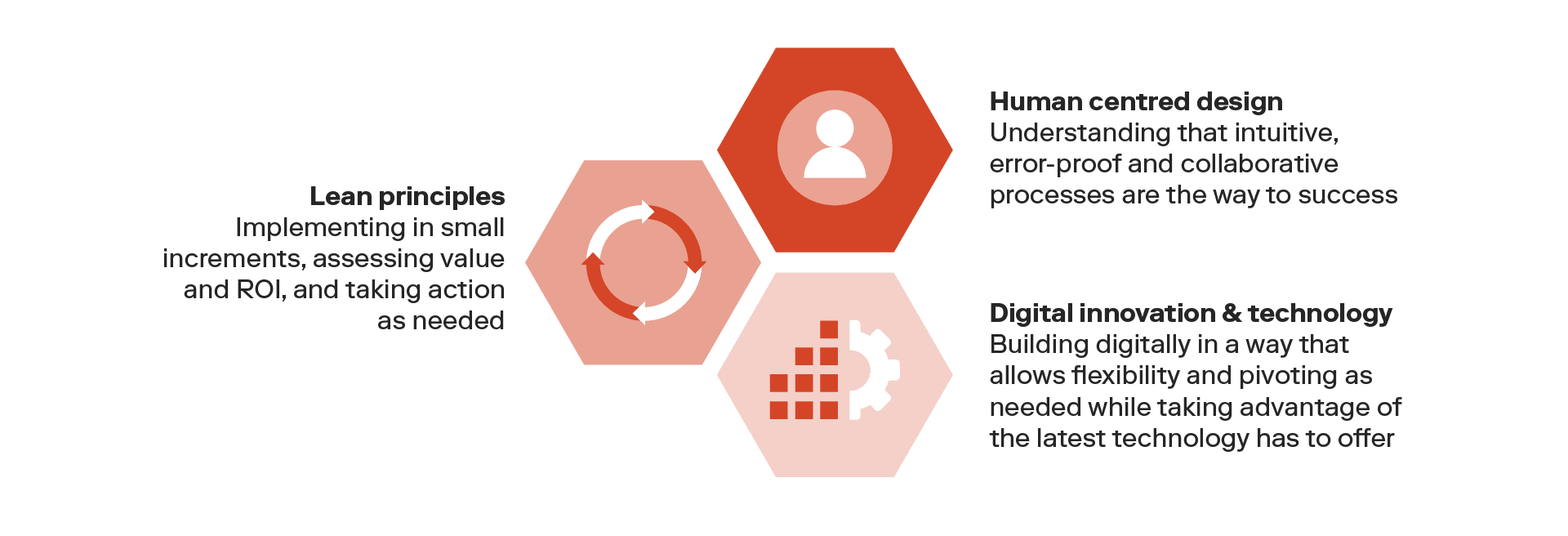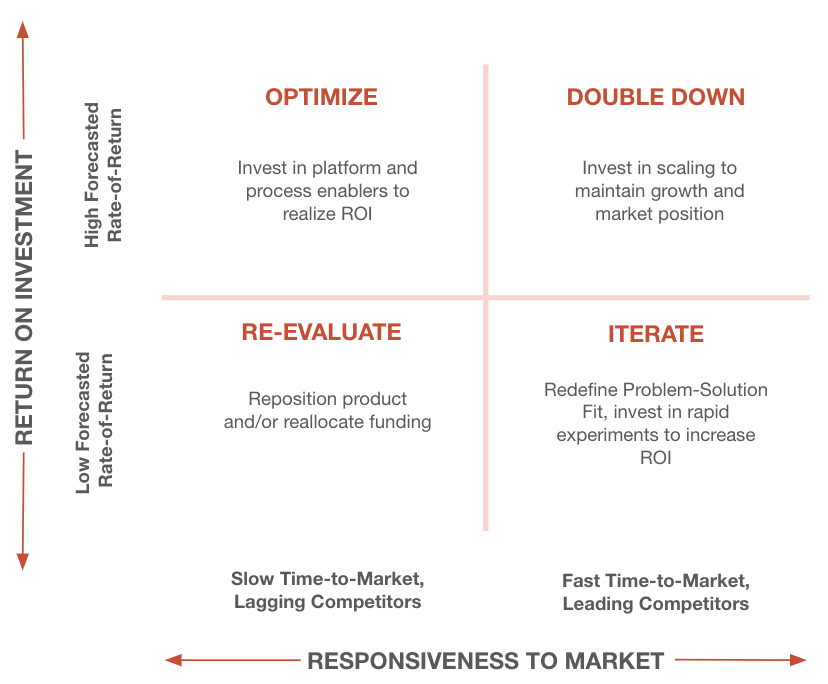Many organizations have been pressured to start or accelerate their digital transformation in the wake of the pandemic. However, in spite of the leaps in innovation we’ve seen over the past few years, many organizations are now confronted with the operational consequences of making massive pivots or scaling faster than they can effectively manage. Symptoms of this range from the misallocation and prioritization of resources, slower speed to market, low team engagement and morale, and a fundamental disconnect between the organization and their customers.
In this blog post, we’ll cover how Lean Digital Operations can help you face these challenges.
What is Lean DigitalOps?
Lean Digital Operations (or Lean DigitalOps) is inspired by lean principles, agile portfolio management, and the growing movement around Product Operations. Lean DigitalOps is a governance framework that takes bias to lean processes and collaboration, coupled with human-centered design, and powered by digital innovation and technology. It aims to reduce the effort of cross-functional build activities and facilitates decision-making while optimizing for customer-centricity and value creation.

Measuring impact with Lean DigitalOps
With limited funding, the key to measuring the impact of your transformation by adopting Lean DigitalOps is to assess these two elements:
- Return on investment (ROI): Transformational initiatives should create a snowball effect where finishing each initiative creates savings that can be reinvested in other areas of the enterprise. This is the way to multiply the impact of your funding and be able to truly transform your organization.
- Responsiveness to market: Your teams, in collaboration with your customers, should have no shortage of ideas to generate value. However, if you are slow to respond to changing markets, you will be left behind. Increasing your agility and ability to meet your customers' changing needs, while decreasing the cost to do so, is the essence of an Agile organization.
Effective decision-making using the DigitalOps Funding Matrix
By proceeding in increments, you reduce your risk. Frequently assessing where you are and making the right call will increase your chance of success. This is critical in the context of digital organizational scaling. Many companies focus funding on revenue-generating customer-facing digital applications. But building organizational capabilities to efficiently create, grow, and scale these innovations is often overlooked (e.g., DevOps, cloud infra, modern quality practices, dev experience tooling, design systems).
As digital capabilities mature, the limiting step of innovation shifts from the product to the constraints of the platform it’s built upon. All the platform enablers mentioned above liberate teams from those constraints and allow the Agile principles actually to occur, such as continuous delivery and sustainable development.
So what method can you use to make those decisions on where to invest funding? Rangle’s Digital Ops Funding Matrix is a framework used to prioritize what initiatives or products move forward and which do not. It is based on managing investment decisions on innovation against actual need – balancing product vs. platform investment.

The road to success
Rangle has had great success implementing digital lead ops, and we believe that following this approach is the best way to maximize the value of your transformational investment.
Remember to:
- Continuously measure ROI and responsiveness to market for each product and platform the Digital Ops Funding Matrix can be used to allocate your funds.
- Make bets not just on customer-facing digital products but also on the platforms they are built on top of to achieve scale.
- Following Agile principles, proceeding in increments, reviewing initiatives on a regular basis, and pivoting as needed. Ensure any given initiative is tied to an organizational objective.
If you want to learn more or need help meeting your digital transformation goals, reach out to us for a conversation and assessment of your unique digital context. We’re happy to support you in an advisory or delivery capacity.

